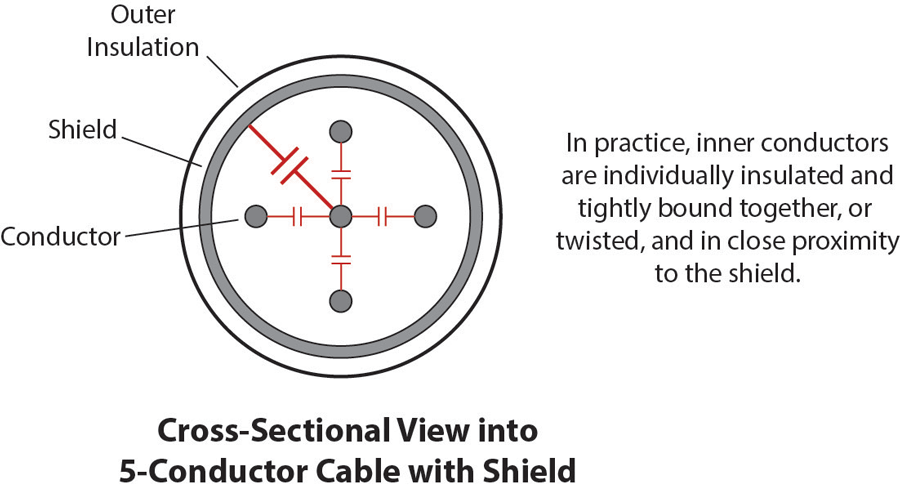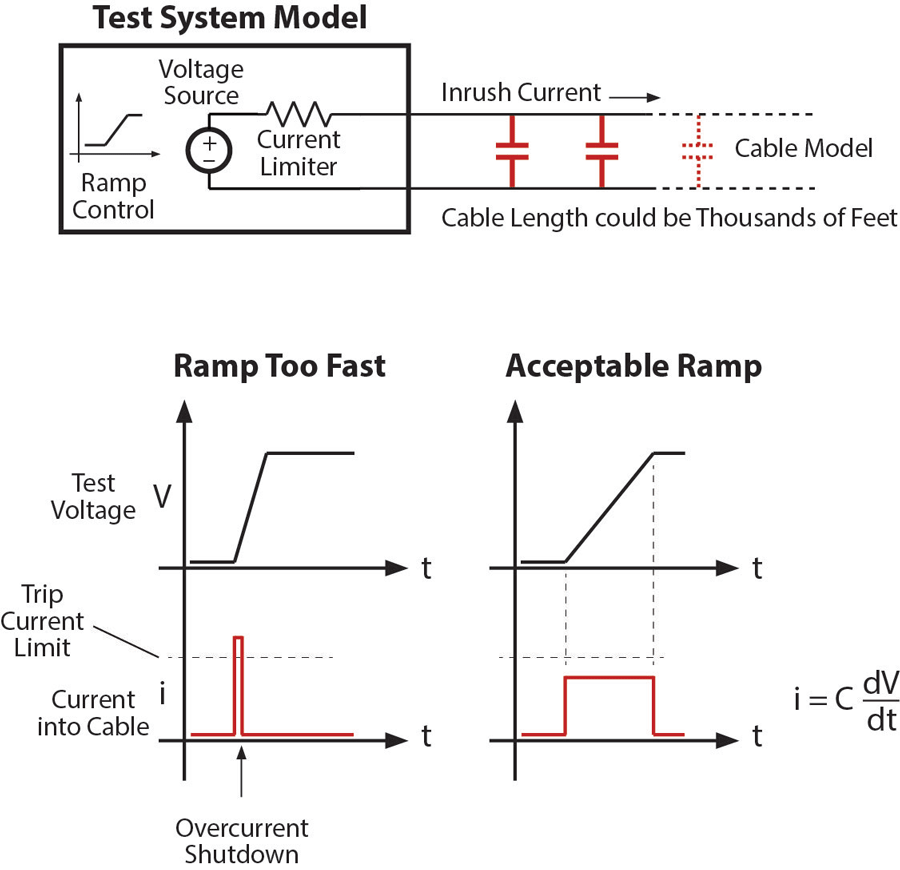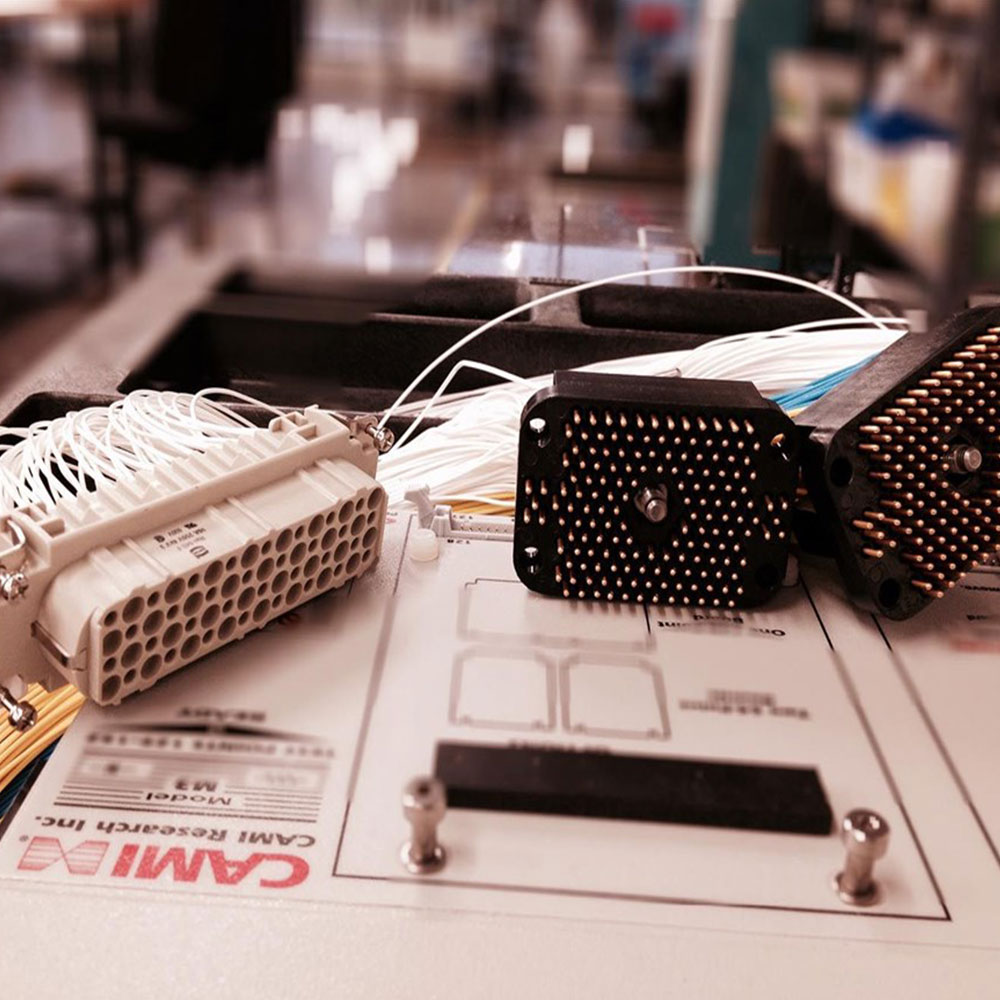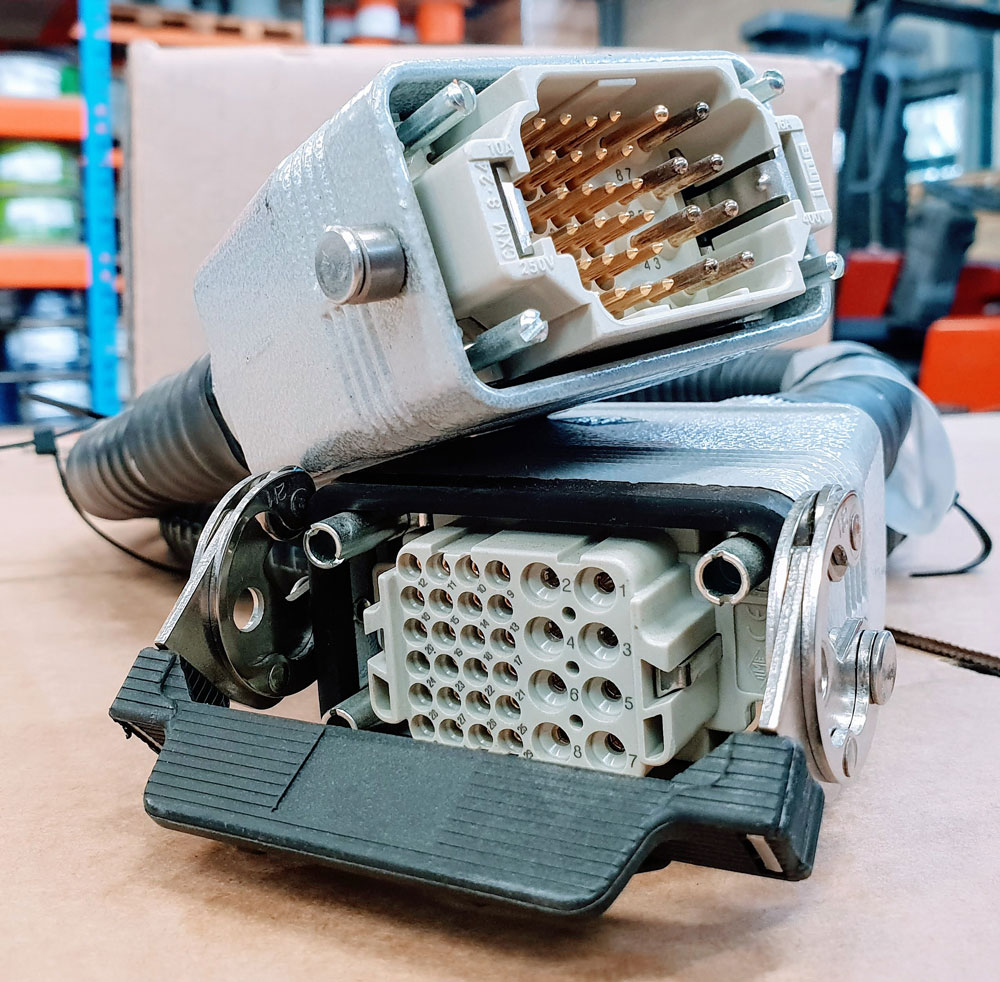
Electrically Testing Long cables
Overview
How Do Long Cables Electrically Differ from Short Ones?

Good-quality twisted pair Ethernet cable has a capacitance of about 17 pF per ft. Note that in the absence of an iron core or other material that concentrates magnetic flux located in close proximity to the cable, inductance plays a small role compared to capacitance in affecting signal transmission through a long cable.
How does Increasing Capacitance Affect Wire Resistance Measurement?
Wire resistance measurements occur at a low, fixed voltage, typically +10 V, and little opportunity exists to raise the voltage or lower the output impedance to charge the cable capacitance faster. We can, however, easily lengthen the pulse to allow sufficient time for the pulse's test voltage to be reached before capturing the measurement on its falling edge.

The capacitance picture becomes more complex when three or more conductors run in parallel through a cable, and especially if a surrounding metal shield exists. In this case, the capacitance between a wire being measured and its surrounding forest of copper can be much greater, accentuating the effect described above.

We overcome the impediments to a good measurement of wire resistance in the presence of high capacitance by simply waiting longer for the result. For cables longer than 10 ft (3m), we increase the pulse width (dwell time) as much as necessary to achieve reasonable data. Where resistance measurement of 64 individual conductors in a 2-ft-long multiconductor cable typically completes in about 2 seconds on a CableEye® test system manufactured my company, lengthening the cable to 20' may require 3 seconds, and lengthening it to 200' would have us wait about 11 seconds for the result.
KPIX-TV
How does Increasing Capacitance Affect Insulation Measurement?
Making measurements on modern insulation whose values are typically 100 MΩ or more at a thickness of only 25 mils (0.64mm) imposes very different requirements on test equipment than does measuring copper. While a low voltage of +10 V or less will push enough current through a copper wire to make highly accurate resistance measurements, hundreds or thousands of volts may be necessary to push enough electrons through good insulation to obtain a measurable current. We typically refer to test equipment designed to do this as a hipot ("high potential") tester.
We measure insulation resistance in Megohms (106 Ω) or Gigohms (109 Ω) and wish to find the leakage current through the insulation, in microamps, at a specified voltage to compute this number. An additional test aims to certify that the insulation does not suffer dielectric breakdown at a specified voltage, typically a voltage higher than that used to measure leakage current. Dielectric breakdown occurs when the insulation (the "dielectric") ionizes (typically at a pinhole point in the insulation) to form low resistance conductive path through the insulator. Insulation which experiences dielectric breakdown not only fails the test, but renders the cable damaged and unusable as the result of a small, open tunnel where insulation had once isolated the environment from the copper conductor.
As with copper wire measurement, we start with a pulse of high voltage, and the thought that we need only to measure the leakage current at this voltage to have our answer. Quickly, however, problems develop.
First, for reasons of operator safety when using high voltage test equipment, we limit the maximum permissible output current to 1.5 mA. In fact, in practice, we prefer that the maximum limit, also called "trip current" be even less. Why? Consider that at a typical test voltage of 1,000 Vdc, should a pinhole opening in the insulation develop, the current will rapidly rise to the trip limit which, at 1.5 mA, would focus 1.5 W of power (1,000 V x 0.0015 A) into an extremely narrow pinhole channel with timing as fast as a lightening strike. The heat developed during the microseconds of a discharge could burn a hole in the insulation or vaporize copper on the wires' surfaces, permanently damaging the cable.

Keeping the trip current low, then, is desirable. This, however, imposes another restriction resulting from cable capacitance. The current that must flow into the cable, "i", as the test voltage "V" is applied, is a function of the cable's parasitic capacitance and the rate of change of the rising voltage, "dV/dt":
i = C dv/dt
The shorter the rise time of the voltage (large dV/dt), the greater the inrush current needed to charge the cable's parasitic capacitance. If the ramp-up is too fast, we exceed the trip current before the test voltage is reached, and the test system shuts down the voltage before a leakage measurement can be taken. This situation is indistinguishable from a true insulation breakdown where the trip current is also exceeded.As a cable increases in length, so does its capacitance, which further limits the rise time. Thus, to reach the test voltage without first hitting the trip current, care must be taken to adjust the voltage ramp in accordance with the length of the cable - the longer the cable, the slower the ramp up.
The CableEye HVX Tester manufactured by CAMI Research has a ramp that can be adjusted from 150 V/s to 5,000 V/s. For cables not exceeding 10 ft (3 m) and voltages not exceeding 1,000 Vdc, the maximum ramp rate will work well. We have tested the system on a cable exceeding 6,000 ft (2,000 m) at a ramp rate of 150 V/s. Interestingly, the increasing wire resistance of such a long cable helped to slow the charging current, but also required a 10s minimum dwell time to ensure that the full cable length reached the test voltage prior to making a leakage measurement.
Insulation Resistance Testing in the Presence of a Shield

We aim to find leakage between each conductor and the shield, and as long as the conductor of interest is measured at high voltage against a grounded shield, we accomplish this without ever needing to apply voltage to the shield itself.
Potential Danger in Testing Long Cables at High Voltage
1/2 CV2
Conclusion
The presence of parasitic capacitance in cables longer than 10 ft (3 m) necessitates an increase in measurement time to obtain an accurate reading of a cable's wire and insulation resistances. Inrush current experienced at the start of high voltage insulation tests require a controlled ramp to prevent exceeding a maximum safe current limit of 1.5 mA. A slow ramp-up in voltage to accommodate this requirement may significantly increase the test time.
Because of the increased capacitance of a shield conductor and the resultant difficulty in reaching test voltage on the shield due to high initial charging current, insulation testing involving the shield may be limited to wire-to-shield only, and application of voltage shield-to-wire eliminated without loss of confidence in the shield insulation.
To ensure accurate, timely, and safe electrical measurements of wire and insulation resistance in long cables, hipot testers need to offer controls to set ramp rate, dwell time, and selectively exclude particular conductors, such as the shield, from application of high voltage.
To learn more about the software that drives CableEye testers, click the button below.
CableEye ® Automation-Ready Cable and Wire Harness Test Systems
CableEye testers are highly versatile, expandable and upgradable diagnostic and Pass/Fail check Cable and Harness Test Systems that are PC-based. They are used for assembly, prototyping, production, and QC of standard or custom wire cables and harnesses The entire suite of products is powered by the same easy-to-use operating software and, with the help of its signature easy-to-interpret color-coded graphics, instantly identifies not only when there is a fault, but what type of fault and where.
Low Voltage M2 Series
For diagnostic and Pass/Fail Testing - Find, display, log, & document continuity (opens, shorts, miswires, intermittent connections).
Low Voltage M3 Series
For all of the above plus resistance (contact, isolation, embedded), and diodes (orientation, forward voltage, reverse breakdown).
Low Voltage M4 Series
For all of the above plus precision resistance (4-wire), and capacitance (twist wire relationship, length of cable, length to break, capacitors).
Low Voltage and High Voltage HVX Series
For all as described for M3 plus HiPot (dielectric withstand voltage and insulation resistance). 4-Wire Kelvin Measurement and Advanced Measurement Options (capacitance, twist wire relationship, length of cable, length to break, capacitors) are available.
Try One!

photo credit: Progressive Image

photo credit: AP Technology
"Our production guys find it simple to setup and use. Our clients love it as it provides complete traceability for each and every cable assembly we manufacture."
AP Technology, UK